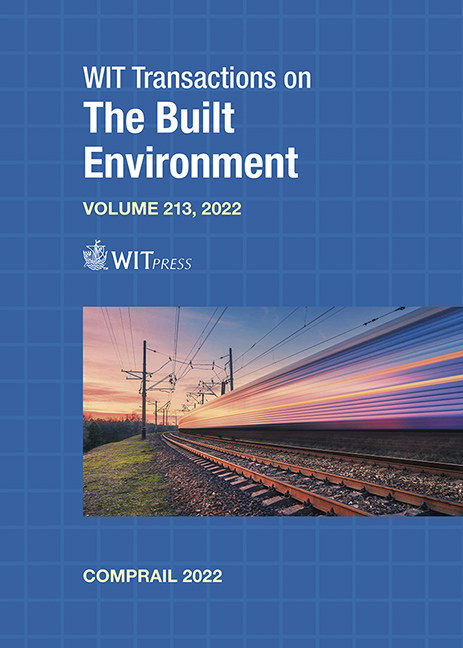ENHANCE RAILWAY DIGITAL MAP FOR SLAM: FEASIBILITY STUDY
Price
Free (open access)
Transaction
Volume
213
Pages
12
Page Range
233 - 244
Published
2022
Paper DOI
10.2495/CR220211
Copyright
Author(s)
NADIA CHOUCHANI, IBAN LOPETEGI ZINKUNEGI
Abstract
Safe train positioning is a challenging task that boosts the traffic capabilities and the quality of train localization and integrity information, but above all enables cost reductions in infrastructure train detection systems such as balises and track circuits. Prominent technologies, namely, global navigation satellite system and inertial measurement unit sensors are arising to incorporate in train positioning. Typically, trains run on harsh railway environments including interference, insufficient satellite availability and signal blockages in specific areas like tunnels and urban canyons or due to meteorological conditions changes. Currently, these problems are solved with the use of balises for full supervision modes and drivers for staff responsible/shunting modes. However, autonomous trains with fully automatic driving and without drivers will need to deal these issues. Simultaneously localization and mapping algorithms based on radar and/or lidar sensors have shown great potential of being candidate positioning solutions for future train transportation. This paper presents a state of the art on these techniques and a testing architecture as part of a study on the feasibility of candidate sensors for safe autonomous train positioning in order to assess the viability of absolute positioning without need on infrastructure devices.
Keywords
SLAM, mapping, autonomous driving, railway, sensors





